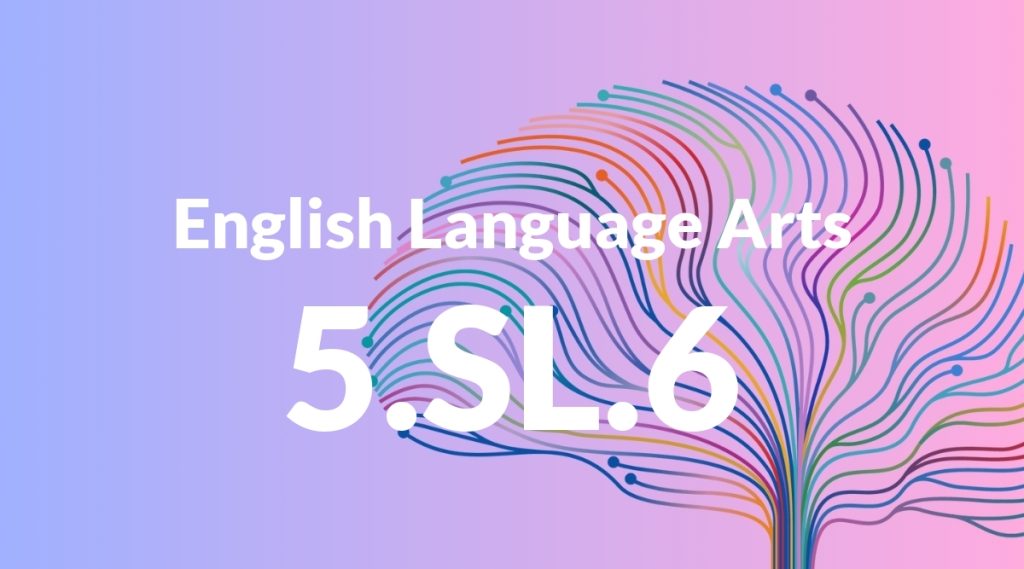Standard: 5.SL.6 – Adapt speech to a variety of contexts and tasks, using formal English when appropriate to task and situation. (See grade 5 Language standards 1 and 3 here for specific expectations.)
Grade level: Grade 5
Subject: English Language Arts
Domain: Speaking & Listening
Teacher Overview
This standard emphasizes the importance of adapting speech to different contexts and tasks, using formal English when appropriate. It helps students understand the nuances of communication and prepares them for various real-world scenarios where different levels of formality are required. Students should have a basic understanding of different types of speech (formal vs. informal), familiarity with basic grammar and sentence structure, and some experience with public speaking or presenting in front of a group.
After mastering this standard, students will develop the ability to analyze the context of a situation to determine the appropriate level of formality, enhance their public speaking skills, and improve their ability to communicate effectively in various social and academic settings.
Common Misconception 1
A common misconception is that formal speech is only necessary in highly formal settings like ceremonies. This is incorrect because formal speech can be appropriate in many everyday contexts, such as classroom presentations or speaking with authority figures.
Intervention 1
To address this misconception, provide students with examples of everyday situations where formal speech is appropriate. Role-playing activities can help students practice and recognize these contexts.
Common Misconception 2
Another misconception is that using formal speech means using complex vocabulary and long sentences. This is incorrect because formal speech is more about clarity and appropriateness to the situation rather than complexity.
Intervention 2
To correct this misconception, emphasize the importance of clear and concise communication. Provide practice opportunities where students can focus on being clear and appropriate without overcomplicating their language.
Prerequisite Knowledge
Students should have basic understanding of different types of speech (formal vs. informal), familiarity with basic grammar and sentence structure, and some experience with public speaking or presenting in front of a group.
Subsequent Knowledge
Students will develop the ability to analyze the context of a situation to determine the appropriate level of formality, enhance their public speaking skills, and improve their ability to communicate effectively in various social and academic settings.
Instructional Activities
- Role-playing different scenarios requiring varying levels of formality.
- Peer reviews of speeches to provide feedback on appropriateness of language.
- Group discussions on when and why to use formal speech.
- Creating a list of formal and informal phrases and practicing their use in context.
- Watching videos of speeches and identifying the level of formality used.




